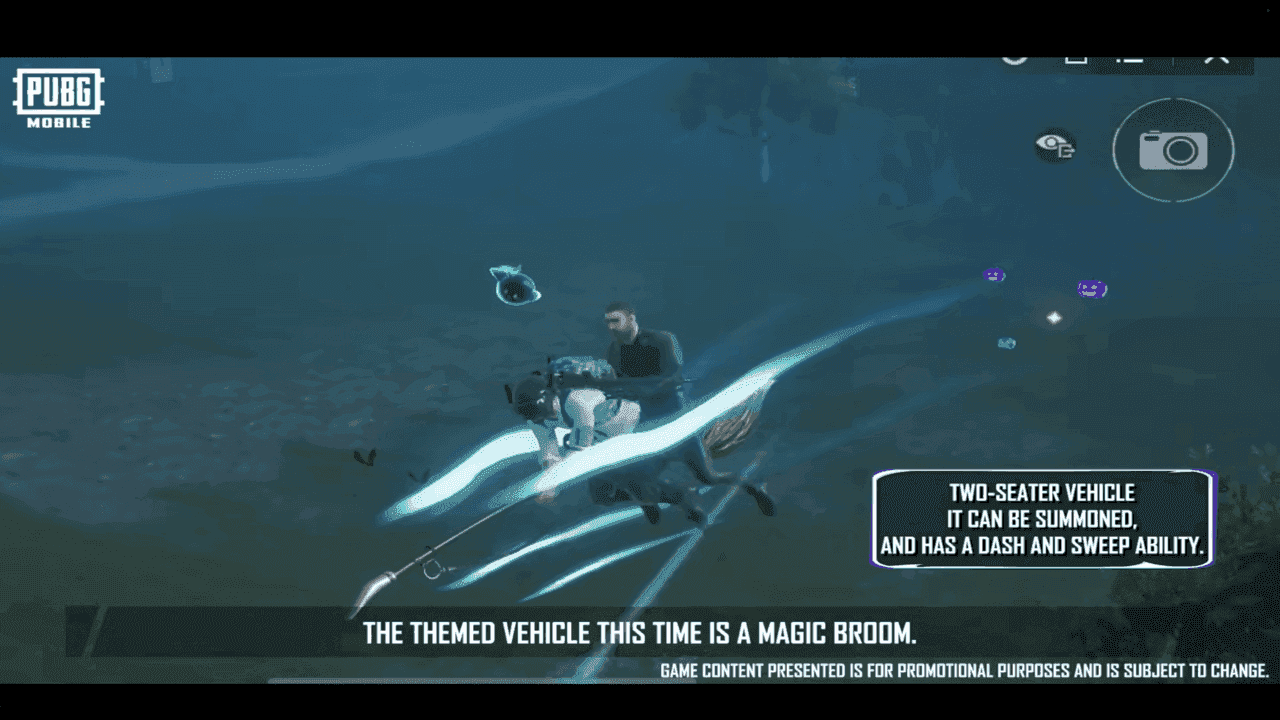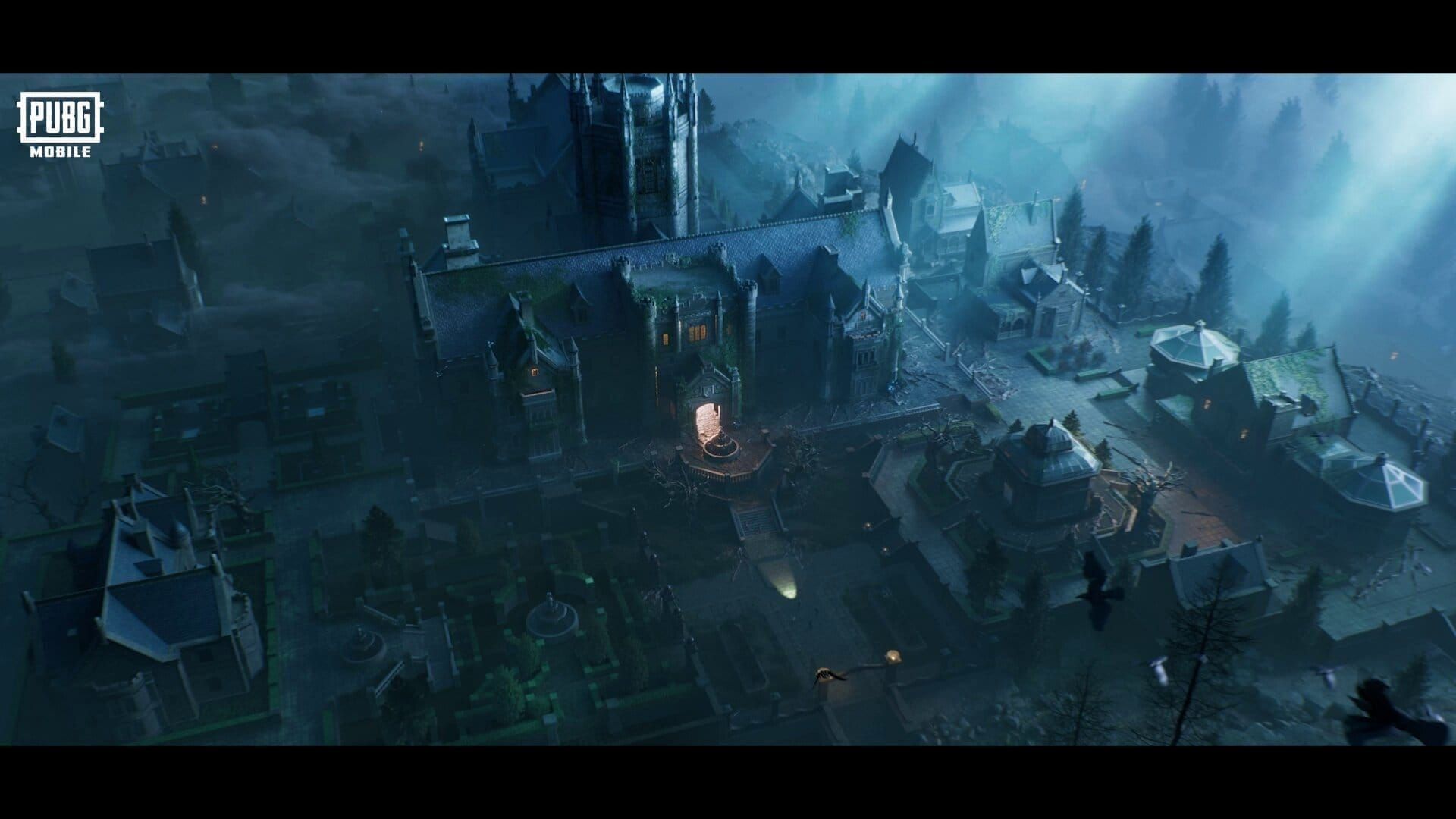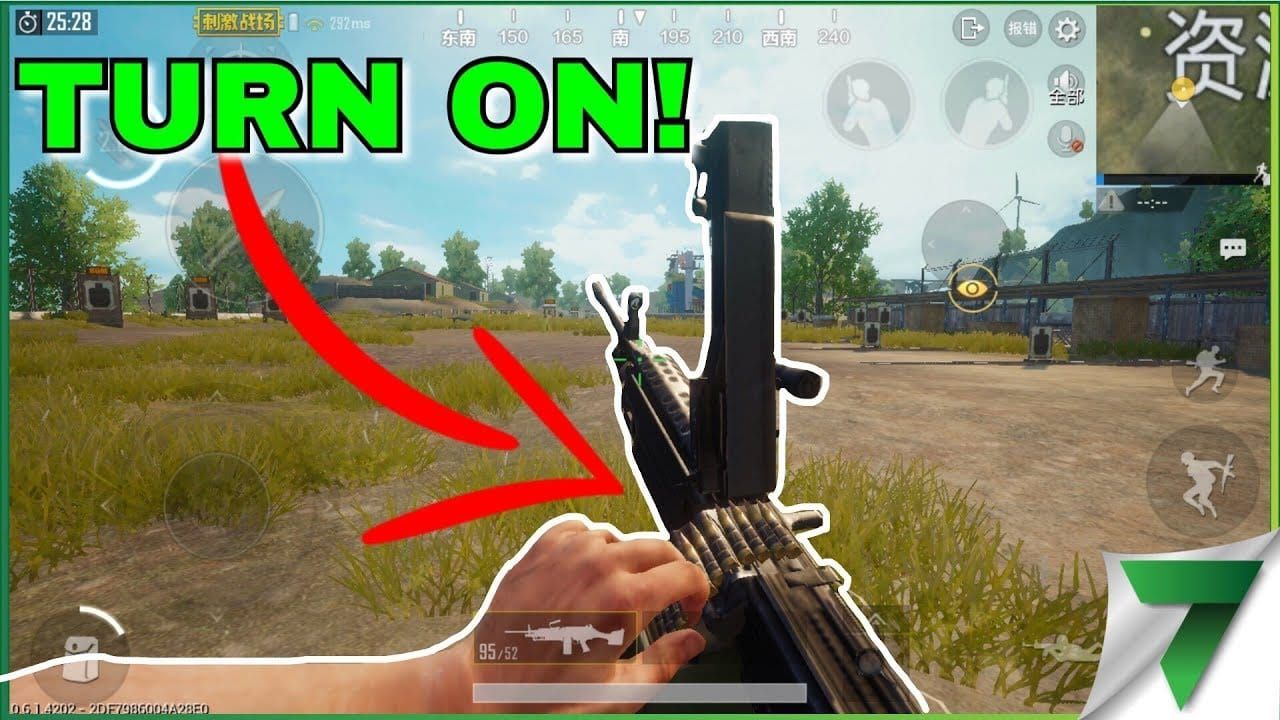Understanding Magic Broom Combat Fundamentals
What is Magic Broom Combat
So here’s the thing about Magic Broom combat—it completely flipped the script when PUBG Mobile dropped their 4.0 Spooky Soiree update back in September. I’ve been covering mobile battle royales for years, and this aerial warfare system genuinely caught me off guard with how much it changes the game.
Think of it as your personal flying death trap. Two seats, zero protection, infinite possibilities for either glory or spectacular failure.

The Magic Broom isn’t just another vehicle—it’s a tactical game-changer that turns every fight into a 3D chess match. You’ve got rapid repositioning (obviously), flanking maneuvers that bypass traditional chokepoints, and aerial surprise attacks from angles most players never even think to watch. The psychological impact alone? Chef’s kiss.
What really gets interesting is how it integrates with the Wraithmoor Mansion and Ghostie companion system. Suddenly you’re not just managing ground combat—you’re orchestrating aerial assaults while your ghost buddy provides backup. For the full experience though, you’ll want sufficient UC reserves. Unknown Cash PUBG Mobile buy through BitTopup keeps you stocked without breaking the bank—instant delivery, competitive pricing, the works.
Core Mechanics and Physics
Here’s where things get spicy. The Magic Broom operates on a driver-passenger system that demands actual teamwork (shocking, I know). Driver handles movement, passenger becomes your airborne gunner. Simple enough, right?
That boost function? It’s simultaneously your best friend and worst enemy. Sure, it provides incredible speed advantages, but hit it too aggressively and you’ll literally launch your teammate into the stratosphere. I’ve seen more accidental team kills from overzealous boosting than I care to count. Communication and throttle control aren’t suggestions—they’re survival requirements.
The open-air design means you’re basically flying around in a convertible during a gunfight. Zero ballistic protection, complete exposure to enemy fire throughout your entire flight. It’s terrifying and exhilarating in equal measure. This vulnerability isn’t a bug—it’s the feature that keeps aerial combat balanced. Speed over sustainability, always.
When to Use Aerial Tactics
Timing is everything with the Magic Broom. Early-game rotations? Absolutely perfect for securing high-value loot before ground teams can even reach the area. I’ve watched squads clean out entire compounds while their opponents were still running across open fields.
Mid-game represents the sweet spot for aerial tactics. Circle rotations become trivial, elevated overwatch positions turn into tactical advantages, and surprise attacks on unsuspecting enemies… well, let’s just say the element of surprise hits different when it comes from above.
Late-game scenarios require more finesse. Reduced play areas mean higher detection probability and fewer escape routes. Risk-reward calculations become critical when the circle’s breathing down your neck.
Mastering Airborne Angles and Positioning
Optimal Descent Angles
Let’s talk about the Castle-Entrance Angle Glitch—arguably the most broken positioning technique in the current meta. I’ve tested this extensively, and when executed properly, it’s absolutely devastating.
Here’s the step-by-step: acquire your Magic Broom, navigate to Wraithmoor Mansion’s entrance hall, identify that interior ledge above the door frame, position yourself over the ledge, then press exit at the exact moment to land on the hidden perch.

Why is this so powerful? Most players expect threats from predictable angles—stairs, windows, courtyard approaches. They never look up at that specific spot. From this position, you can drop grenades on entire squads entering below. It’s like having a personal bombing run on demand.
The optimal descent trajectory maintains that 45-60 degree angle. Maximizes surprise while minimizing your exposure time—because trust me, every second you’re visible is another opportunity for someone to turn you into Swiss cheese.
Wind Pattern Recognition
Environmental factors will mess with your plans faster than you can say chicken dinner. Crosswinds affect lateral stability something fierce, requiring constant counter-steering to maintain your intended trajectory.
Lower altitudes provide stable flight conditions but expose you to ground threats. Higher altitudes offer concealment and longer engagement ranges, but precise positioning becomes a nightmare. It’s a constant balancing act.
Coastal areas feature stronger, more variable winds that’ll disrupt even well-planned approaches. Inland regions provide predictable conditions—much better for precision maneuvers and extended engagements.
Angle Adjustment Techniques
The Magic Broom responds differently depending on speed, altitude, and boost status. Emergency corrections become absolutely critical when you encounter fire or obstacles. Rapid altitude changes break enemy tracking while maintaining your offensive capabilities.
Side-slip maneuvers help you avoid incoming fire while keeping targets in sight. Advanced pilots learn to maintain stable firing platforms during evasive maneuvers—coordinating driver inputs with passenger needs throughout complex flight patterns. It’s an art form, really.
Drag Shot Techniques and Execution
Understanding Aerial Targeting Mechanics
Aerial targeting is a completely different beast from ground combat. You’re dealing with continuous three-dimensional motion—both your Magic Broom and your targets are moving simultaneously. Lead calculations become complex puzzles requiring intuitive understanding rather than mathematical precision.
The passenger position provides optimal firing angles, but it requires absolute trust in your driver’s decisions. Effective teams establish clear protocols that allow gunners to request positioning while enabling necessary evasive maneuvers. Communication is key.
Timing and Precision Factors
The Magic Broom’s speed creates these brief engagement windows where you need immediate target acquisition and rapid fire delivery. Precision shooting requires accounting for vehicle movement, target movement, and projectile travel time—all simultaneously.
Burst fire proves more effective than sustained automatic fire. Short, controlled bursts allow better recoil management while conserving ammunition and reducing your exposure time to return fire. Every bullet counts when you’re flying around like a clay pigeon.
Platform Stability Considerations
Here’s something most guides won’t tell you—the open design creates stability challenges that significantly affect accuracy. Unlike enclosed vehicles with bracing points, aerial platforms require stability through body positioning and grip techniques.
Driver technique directly impacts passenger effectiveness. Smooth flight paths enable better target tracking, while erratic movements disrupt aim but provide defensive benefits. Environmental factors like altitude and weather affect stability too. Lower altitudes provide better target resolution but increase ground threats. Higher altitudes offer safety but reduce identification and precision.
Safe Landing Strategies and Zone Selection
Landing Zone Assessment
Safe landings require comprehensive threat assessment before you even begin descent. I can’t stress this enough—every landing is a potential death trap if you don’t do your homework.
Optimal zones provide immediate cover, multiple escape routes, and minimal enemy presence probability. Open areas create vulnerability windows where enemies can engage dismounting players with significant advantages. Rooftop landings offer superior defensive positions but require precise piloting skills.
Ground-level landings provide mobility options but increase exposure to multiple threat vectors. It’s always a trade-off.
Risk vs Reward Analysis
Every deployment requires careful risk-reward calculation considering game state, team positioning, and available alternatives. High-reward scenarios like third-party opportunities might justify increased exposure, while routine movements should prioritize safety.
Team composition affects risk tolerance significantly. Teams with strong ground combat capabilities can afford more aggressive aerial tactics. Teams relying on positioning should prioritize safer approaches that preserve tactical advantages.
The Magic Broom’s durability limitations prevent indefinite hovering, encouraging decisive action within safe operational windows. Don’t overthink it—commit to your plan and execute.
Emergency Landing Tactics
Emergency situations demand immediate decision-making for maximum survival probability. Common scenarios include unexpected contact, vehicle damage, or passenger dismounting incidents.
Rapid altitude changes often provide the best escape options. Diving toward terrain that breaks line-of-sight disrupts enemy tracking while providing emergency landing cover. When passenger dismounting emergencies occur, immediate driver response becomes critical. Rapid descent to safe areas takes priority over mission objectives when teammates face danger.
Essential Controls and Settings Optimization
Control Configuration for Aerial Combat
Successful Magic Broom operation requires adapted control schemes that prioritize flight responsiveness and passenger comfort. Standard ground combat settings often don’t translate well to aerial engagements.
First-person perspective provides superior visibility during complex maneuvers—especially when executing techniques like the Castle-Entrance glitch. Enhanced situational awareness helps navigate tight spaces and execute precision positioning that third-person perspective simply can’t match.

Communication systems require optimization for aerial operations where noise and rapid changes demand clear, concise information exchange. Background noise from wind effects can interfere with voice chat, so consider adjusting audio settings accordingly.
Device-Specific Considerations
Different devices provide varying performance levels that directly affect combat effectiveness. Higher-end devices offer better frame rates and reduced input lag—competitive advantages during precision maneuvers that can mean the difference between success and spectacular failure.
Screen size impacts target identification capabilities. Larger screens provide better resolution for spotting enemies, but they may affect handling comfort during extended sessions. Battery life becomes critical during extended operations demanding consistent performance. The intensive graphics requirements drain batteries rapidly, potentially affecting performance during crucial moments.
Performance Monitoring
Tracking aerial combat effectiveness requires different metrics than ground engagements. Success rates for insertions, survival times after deployment, and elimination efficiency during attacks provide better insights than traditional K/D ratios.
Frame rate stability directly impacts control responsiveness and targeting accuracy. Network latency affects responsiveness and coordination—particularly critical during precision maneuvers where split-second timing determines success or failure.
Advanced Aerial Combat Scenarios
Multi-Target Engagement Strategies
Advanced combat scenarios involve engaging multiple enemies while maintaining control and coordination. The Castle-Entrance glitch enables devastating multi-target attacks through strategic grenade deployment. From elevated positions, single players can eliminate entire teams below through superior positioning.
The psychological impact of unexpected aerial attacks creates panic responses that generate additional opportunities. Most players aren’t mentally prepared for threats from above, leading to poor decision-making under pressure.
Coordinated attacks combining Magic Broom mobility with Ghostie abilities create powerful force multipliers. The Ghost Balloon skill provides alternative positioning that complements Magic Broom operations perfectly. Teams can establish multiple aerial overwatch positions simultaneously, creating crossfire situations that overwhelm enemy defenses.
Team Coordination Protocols
Effective aerial operations require sophisticated communication protocols that coordinate driver and passenger actions while maintaining situational awareness. Clear role definitions prevent confusion during high-stress situations.
Driver responsibilities include flight planning, threat avoidance, and passenger safety. Passenger duties focus on target acquisition, threat identification, and tactical communication. Clear target callouts help drivers position for optimal angles while maintaining threat awareness.
Passengers serve as secondary observers for landing assessment and escape route identification. This dual-role system maximizes information gathering while distributing cognitive load between team members.
Counter-Strategy Development
Understanding Magic Broom vulnerabilities helps develop effective counter-strategies for neutralizing aerial threats. The open design creates opportunities for skilled ground players to eliminate aerial opponents through precise shooting.
Anticipating common attack patterns enables proactive defensive measures that reduce aerial effectiveness. The Castle-Entrance glitch’s growing popularity actually reduces its effectiveness as more players learn appropriate counters. Pre-aiming ceiling positions and deploying grenades into suspected locations neutralizes surprise advantages.
For maintaining competitive edge in evolving aerial combat scenarios, adequate UC reserves become crucial for accessing latest equipment and upgrades. PUBG Mobile UC discount deal through BitTopup provides cost-effective solutions with reliable delivery for serious players.
Map-Specific Aerial Tactics
Wraithmoor Mansion Strategies
Wraithmoor Mansion serves as the primary laboratory for advanced Magic Broom tactics. The multi-level design creates numerous aerial approach vectors and defensive positions that simply don’t exist elsewhere.

The Castle-Entrance glitch represents the most significant tactical advantage available, but it requires intimate knowledge of the mansion’s layout and precise timing execution. Interior navigation benefits tremendously from Magic Broom mobility—bypassing maze-like corridors to reach high-value areas with speed that ground teams can’t match.
Vertical design elements reward aerial approaches in ways that fundamentally change how you think about building clearing. Traditional room-by-room clearing becomes obsolete when you can access upper floors directly.
Erangel Integration
The integration with Erangel’s redesigned areas creates fascinating new tactical opportunities. Port areas feature enhanced vertical elements that complement aerial operations beautifully.
Traditional chokepoints lose significance when teams possess aerial mobility. Bridge crossings, valley passages, terrain obstacles—they all become less important when you can simply fly over them. High-value locations become more accessible through aerial approaches, disrupting established looting patterns and timing expectations.
Terrain Exploitation Techniques
Different terrain types provide varying levels of tactical support. Mountainous regions offer numerous landing options and natural concealment, but they may limit escape routes during emergencies.
Flat terrain provides excellent visibility for spotting threats and targets, but it reduces available cover for safe landings. Urban environments create complex navigation challenges while offering unique tactical opportunities—building-to-building movement becomes possible, enabling flanking maneuvers that ground teams simply cannot anticipate.
Coastal areas feature unique wind patterns that affect flight performance. Understanding these environmental factors becomes crucial for consistent execution of advanced techniques.
Common Mistakes and How to Avoid Them
Positioning Errors
The most frequent mistake I see involves hovering in open areas where enemies can easily target exposed riders. This usually stems from overconfidence in the Magic Broom’s mobility and underestimating enemy reaction times.
Over-reliance on the Castle-Entrance glitch creates predictable vulnerability as the technique becomes more widely known and countered. Poor landing zone selection results from inadequate threat assessment and rushed decision-making under pressure.
Teams that prioritize speed over safety consistently find themselves trapped in compromised positions with limited escape options. Don’t let the Magic Broom’s mobility fool you into thinking you’re invincible.
Timing Mistakes
Aggressive boosting with passengers represents a critical timing error that frequently results in teammate elimination through fall damage. I’ve seen entire matches thrown away because drivers got trigger-happy with the boost function.
Premature engagement during approach phases alerts enemies before achieving optimal positioning, sacrificing crucial surprise advantages. Extended hovering creates unnecessary exposure that skilled enemies will exploit ruthlessly.
Equipment Misuse
Improper weapon selection significantly reduces engagement effectiveness during aerial combat. Heavy weapons with slow handling characteristics perform poorly during rapid engagements where mobility and quick target acquisition determine success.
Neglecting Ghostie optimization wastes valuable tactical resources that complement Magic Broom operations. Inadequate ammunition management during extended operations leaves teams defenseless when they need firepower most. The Magic Broom’s mobility enables extended engagements that consume ammunition rapidly.
Practice Methods and Skill Development
Training Ground Applications
Developing Magic Broom proficiency requires systematic practice of fundamental skills. The Castle-Entrance glitch demands precise timing that only repetitive practice can develop effectively.
Flight control mastery involves smooth coordination between driver inputs and passenger needs. This coordination doesn’t happen naturally—it requires dedicated practice time and clear communication protocols.
Emergency procedure practice prepares teams for unexpected combat situations. Rehearsing dismounting responses, emergency landing procedures, and threat evasion techniques builds confidence and improves survival rates during actual engagements.
Skill Progression Tracking
Measuring improvement requires tracking specific performance metrics that reflect aerial combat effectiveness. Success rates for tactical approaches provide objective feedback for identifying areas requiring additional practice.
Communication effectiveness significantly impacts overall performance and requires dedicated development time. Tactical decision-making develops through diverse scenario experience and careful analysis of engagement outcomes.
Understanding why specific approaches succeed or fail helps refine tactics and avoid repeating costly mistakes. Keep detailed notes on what works and what doesn’t—patterns will emerge over time.
Advanced Technique Development
Mastering the Castle-Entrance glitch requires understanding its limitations and developing alternative approaches for different situations. As the technique becomes more widely known and countered, advanced players must develop variations that maintain tactical advantages.
Combining Magic Broom operations with other 4.0 features creates powerful tactical combinations. Integrating Ghostie abilities, new weapons like the 200-meter range Mortar, and environmental features creates sophisticated approaches that keep opponents guessing.
Developing effective counter-strategies against other aerial teams requires understanding common approaches and their inherent vulnerabilities. The meta continues evolving as players discover new techniques and counters.
FAQ
What makes the Magic Broom different from other vehicles? It’s a two-seater flying vehicle that enables true three-dimensional combat and bypasses traditional terrain limitations. Provides access to vertical spaces and aerial attack angles, but leaves riders completely exposed to enemy fire. The boost function can dismount passengers if used too aggressively.
How do you execute the Castle-Entrance Angle Glitch? Five precise steps: acquire Magic Broom, navigate to Wraithmoor Mansion entrance hall, identify the interior ledge above the door frame, position carefully over the ledge, then press exit at the exact moment to land on the hidden perch. This enables devastating grenade drops on enemies below.
What are the biggest Magic Broom combat risks? Complete exposure to enemy fire, passenger dismounting from aggressive boosting, and durability limitations that prevent indefinite hovering. Poor landing zone selection traps teams in compromised positions, while over-reliance on specific techniques becomes ineffective as opponents learn appropriate counters.
How does Magic Broom integrate with 4.0 features? Works seamlessly with the Ghostie companion system—Ghost Balloon provides alternative positioning options, while the 3,000 HP Magic Shield offers defensive capabilities. Complements the Mortar weapon’s 200-meter range for area denial tactics, and enables rapid access to Spooky Crates in Wraithmoor Mansion.
What communication protocols work best for aerial teams? Establish clear roles—drivers handle flight planning and safety, passengers handle targeting and threat identification. Use first-person perspective for complex maneuvers, implement standardized callouts for threats and objectives, and maintain predetermined emergency responses for dismounting and evasion scenarios.
When should teams avoid Magic Broom use? Late-game scenarios with reduced play areas that increase detection probability and limit escape routes. When opponents demonstrate clear awareness of aerial approach patterns, or when environmental conditions compromise flight control. Always avoid extended hovering in open areas and premature engagement before achieving optimal positioning.


















